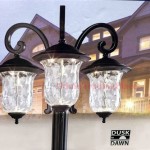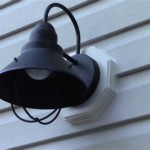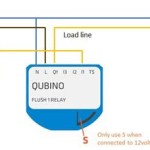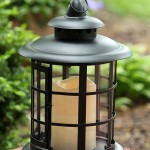Selecting the Right Soil for Thriving Outdoor Plants
The success of any outdoor garden hinges significantly on the quality of the soil used. Soil provides essential support, nutrients, and water retention necessary for plant growth. Selecting the appropriate soil type is a crucial step in ensuring healthy and vibrant plants. Different plants have varying needs in terms of drainage, pH levels, and nutrient requirements, making the choice of soil a critical factor for optimal growth and yield.
Understanding the characteristics of various soil types is fundamental to making an informed decision. Factors such as soil texture, composition, and drainage capabilities play a vital role in determining which soil is best suited for specific plants and environmental conditions. Ignoring these considerations can lead to stunted growth, nutrient deficiencies, and increased susceptibility to diseases.
Understanding Soil Texture and Composition
Soil texture refers to the proportions of sand, silt, and clay particles within the soil. These particles influence drainage, aeration, and nutrient retention. Sand particles are the largest, leading to excellent drainage but poor water and nutrient retention. Clay particles are the smallest, retaining water and nutrients effectively but potentially leading to poor drainage and compaction. Silt particles fall in between sand and clay in terms of size and contribute to both drainage and water retention.
Loam soil, often considered ideal for gardening, is a balanced mixture of sand, silt, and clay. This combination provides good drainage, aeration, and water retention, making it suitable for a wide range of plants. Gardeners can amend existing soil to improve its texture and composition. Adding organic matter, such as compost or aged manure, can improve drainage in clay soils and increase water and nutrient retention in sandy soils.
Besides mineral particles, soil also contains organic matter, which is composed of decomposed plant and animal material. Organic matter improves soil structure, enhances water retention, and provides essential nutrients for plant growth. It also supports beneficial microorganisms that contribute to nutrient cycling and disease suppression. The amount of organic matter in soil can be increased by incorporating compost, leaf mold, or other organic amendments.
Assessing Existing Soil Conditions
Before selecting soil for outdoor plants, it is essential to assess the existing soil conditions. This involves evaluating soil drainage, pH level, and nutrient content. Soil drainage can be assessed by observing how quickly water drains from the soil after a rainfall or irrigation. Poorly draining soils will remain waterlogged for extended periods, potentially leading to root rot. The pH level of soil affects nutrient availability. Most plants prefer a slightly acidic to neutral pH (between 6.0 and 7.0), but some plants thrive in more acidic or alkaline conditions.
A soil test can provide valuable information about soil pH and nutrient levels. Soil test kits are available at garden centers or through agricultural extension offices. These tests typically measure the levels of essential nutrients, such as nitrogen, phosphorus, and potassium, as well as the soil pH. The results of a soil test can help gardeners determine which amendments are needed to improve soil fertility and correct pH imbalances.
Visual assessment can also provide insights into soil health. Healthy soil typically has a dark brown or black color, a crumbly texture, and a pleasant earthy smell. Poor soil may be pale in color, compacted, and lacking in organic matter. The presence of earthworms is a good indicator of healthy soil, as they help to aerate the soil and decompose organic matter.
Types of Soil Suitable for Outdoor Plants
Several types of soil are commonly used for outdoor plants, each with its own advantages and disadvantages. These include topsoil, garden soil, potting mix, and raised bed mix. The best choice depends on the specific plants being grown, the existing soil conditions, and the gardening method being used.
Topsoil is the uppermost layer of soil, typically rich in organic matter and nutrients. It is often used to improve the quality of existing soil or to create new garden beds. However, the quality of topsoil can vary depending on its source. It is important to choose topsoil from a reputable supplier to ensure that it is free from contaminants and diseases.
Garden soil is a blend of topsoil, compost, and other amendments, specifically formulated for growing plants in the ground. It provides a balanced mix of nutrients and good drainage. Garden soil is a convenient option for gardeners who want to improve their soil without having to mix their own amendments. However, it is important to choose a garden soil that is appropriate for the types of plants being grown.
Potting mix, also known as potting soil, is a soilless growing medium specifically designed for container gardening. It typically consists of peat moss, perlite, vermiculite, and other ingredients that provide excellent drainage and aeration. Potting mix is lightweight and sterile, reducing the risk of soilborne diseases. It is important to note that potting mix is not the same as garden soil and should not be used for growing plants in the ground.
Raised bed mix is a specialized soil blend designed for use in raised garden beds. It is typically a lightweight and well-draining mix that contains a high proportion of organic matter. Raised bed mix provides an ideal growing environment for plants in raised beds, allowing for good aeration and drainage while retaining moisture and nutrients. It is typically more expensive than topsoil or garden soil but can provide superior results in raised bed gardening.
Amending Soil for Specific Plant Needs
Many plants have specific soil requirements that may not be met by the existing soil. In these cases, it is necessary to amend the soil to improve its suitability for the plants being grown. Soil amendments can improve drainage, aeration, water retention, nutrient content, and pH level.
Compost is one of the most versatile and beneficial soil amendments. It improves soil structure, increases water retention, and provides essential nutrients. Compost can be made from kitchen scraps, yard waste, and other organic materials. It is best to use well-decomposed compost to avoid introducing weed seeds or pathogens into the soil.
Manure, particularly aged manure, is another excellent soil amendment. It is rich in organic matter and nutrients, especially nitrogen. Manure should be composted or aged before being added to the soil to reduce the risk of burning plant roots or introducing harmful bacteria. Different types of manure have different nutrient contents, so it is important to choose the right type for the plants being grown.
Peat moss is a common soil amendment that improves water retention and aeration. It is derived from partially decomposed sphagnum moss. Peat moss is acidic, so it can be used to lower the pH of alkaline soils. However, the use of peat moss has raised environmental concerns due to its slow rate of renewal. Coco coir, made from coconut husks, is an alternative to peat moss that is more sustainable.
Perlite and vermiculite are inorganic soil amendments that improve drainage and aeration. Perlite is a volcanic glass that has been heated and expanded, creating lightweight, porous particles. Vermiculite is a mineral that has been heated and expanded, creating absorbent particles that hold water and nutrients. Both perlite and vermiculite are sterile and inert, making them useful for starting seeds and propagating plants.
Lime can be added to the soil to raise the pH of acidic soils. It is typically used in the form of ground limestone or dolomitic limestone. Lime should be applied according to a soil test recommendation to avoid over-liming the soil, which can make nutrients unavailable to plants.
Sulfur can be added to the soil to lower the pH of alkaline soils. It is typically used in the form of elemental sulfur or ferrous sulfate. Sulfur should be applied carefully, as it can take several months to have a noticeable effect on soil pH.
Considerations for Specific Plant Types
Different plants have different soil requirements, and it is important to choose soil that is well-suited to the specific plants being grown. Some plants prefer acidic soils, while others prefer alkaline soils. Some plants require well-draining soils, while others can tolerate wetter conditions.
Acid-loving plants, such as blueberries, azaleas, and rhododendrons, thrive in soils with a pH between 4.5 and 5.5. These plants require acidic conditions to properly absorb nutrients, particularly iron. Soil can be acidified by adding sulfur, peat moss, or pine needles. It's important to test the soil pH regularly to maintain the desired level.
Vegetables generally prefer a slightly acidic to neutral soil pH (between 6.0 and 7.0). However, some vegetables, such as potatoes, prefer slightly more acidic conditions. Well-drained soil that is rich in organic matter is ideal for most vegetables. Adding compost or aged manure can improve soil fertility and drainage.
Herbs often have different soil requirements depending on the species. Mediterranean herbs, such as rosemary and thyme, prefer well-draining, slightly alkaline soils. Other herbs, such as mint and parsley, prefer richer, more moist soils. Researching the specific soil requirements of each herb is essential for successful cultivation.
Flowering plants also have varying soil preferences. Roses, for example, prefer well-drained, fertile soils with a slightly acidic pH. Sunflowers, on the other hand, are more tolerant of a wider range of soil conditions. Selecting soil that meets the specific needs of the flowering plants being grown will promote abundant blooms and healthy growth.
Trees and shrubs benefit from well-draining soil that allows for deep root growth. The specific soil requirements will vary depending on the species. When planting trees and shrubs, it is important to amend the planting hole with compost or other organic matter to improve soil structure and fertility.

How To Choose The Best Potting Mix For Container Gardening

Soil For Plants Ultimate Guide To Choose Best Potted

Types Of Soils Which Are Best For Plant Growth

Garden Soil Vs Potting What S The Difference Bob Vila

6 Best Potting Soils For Indoor And Outdoor Plants 2024

Best Potting Soil For Outdoor Potted Plants Proven Winners

Potting Soil 101 How To Choose The Right Mix For Your Plants Garden Design

Best Potting Soil For Outdoor Potted Plants Proven Winners

How To Choose The Best Potting Mix For Container Gardening

Garden Soil Vs Potting 4 Major Differences 3 Faqs Rosy
Related Posts







